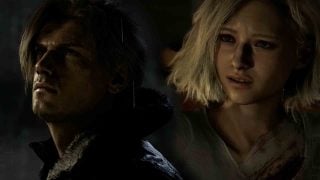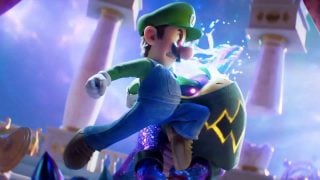The Legend of Zelda Twilight Princess is a game that holds a very special place in my heart, as it was my first adventure through the land of Hyrule. The game was released in November of 2006, which means it’s been a little over 10 years since most made the initial journey, but my first experience with the game was much later, in 2013… I know, a very late start.
Late-Blooming Zelda Fan
I had always heard good things about the Zelda series, and had always wanted to try it, so when I finally got the chance I picked up a copy of one of the most recent titles at the time – Twilight Princess. I didn’t know what to expect and I didn’t know anything about the story except the basics: Link is the hero, and Zelda is the Princess you have to save.

Needless to say, this game really grabbed me. The world, the characters, the story, the fact that I could change the name of my horse; I was completely engaged. Looking back, I’d have to say that the characters were one of my favorite things about the game. From Ordon Village to Death Mountain, there were always new faces to greet, some that were well written, like the forlorn Zora Prince, and others that just had a quirky attitude about them, like the village kids.
Link the Werehog
One of the stand out mechanics of this game is Wolf Link – a brand-new form that appears when the hero is affected by the Twilight early on in the game. This allows for two differing play styles, and it makes you think about the game’s challenges in unique ways. To be honest, I thought that this would have been a bad mechanic and plot point – I had played SEGA’s Sonic Unleashed years before, so my expectations of games that involved the protagonist turning into a lycanthrope were a little on the low side.
I didn’t like it at first, and I found myself wanting to simply play as humanoid Link instead, but it eventually grew on me with its fun take on combat, unlike the aforementioned game starring a certain Werehog.

My least favorite task as Wolf Link was collecting the Tears of Light. Oh. My. Lord. I don’t know how much frustration these sections of the game have caused me, but I’m sure I was in need of a psychological evaluation after spending hours running around in circles looking for an invisible beetle. Admittedly, I’m sure I caused my own frustration by saving in the middle of one of these missions and picking it up a week later. That might have been my fault.
Darker Tone
Many people were initially disappointed by the art style of Wind Waker, claiming that it was too childish for a Zelda game. I personally like the cel-shaded look of that entry, and when I played the HD release for the Wii U, I found that the art style holds up well even today.
Twilight Princess was still an answer to these criticisms, however, and was a complete 180 in terms of art direction. Characters were more realistically proportioned and the color palette was very desaturated overall. The tone of the story was almost as dark, with the game delving into some pretty serious themes. This was a welcome change to many fans who felt that Wind Waker was just too kiddy for them; they wanted their games to grow up alongside them (Ganondorf head-stabbings notwithstanding.)

Nintendo pulled out all of the stops for this story, with some of the characters in the game having very tragic backstories. The Zora Prince took me by surprise and I ended up empathizing with him the most – this character had to watch his mother die right in front of him and witness his whole clan face imprisonment while he fled in terror. It didn’t end there either, it was an interesting little side story throughout the main plot; this young prince was thrust into a terrible situation that no one could prepare for, and he was forced to mature and eventually take control as the rightful heir to the throne. Let me just say that I did not expect anything like that out of a Zelda game.
Then there’s the golden wolf you find around Hyrule, who transforms into the Hero’s Spirit and teaches you new sword techniques. It was revealed much later (via the Hyrule Historia) that this is the lingering spirit of the Link found in Ocarina of Time – a morbid, somber end to one of Nintendo’s most famous figures.

I believe that overall, Twilight Princess’ style and tone gave us some of the best cinematic imagery in a Zelda story to date. One scene in particular that sticks out to me is when Link learns of the origins of the Twili; seeing Link being overtaken by evil in that scene was pretty creepy to say the least. Another personal favorite is when you first meet Zelda and you learn of how Zant took the Kingdom hostage. That shot of Zelda dropping her rapier in surrender always comes to mind as a really powerful moment. Throughout Twilight Princess I felt like there was real risk, danger and mystery, which is something I honestly never got from playing Wind Waker.
Repeated History
Much like the upcoming Breath of the Wild, Twilight Princess was dual released on both the GameCube and the Wii. It’s actually a little funny when you think about it, because Nintendo was in a similar situation back then as they are now. The GameCube had failed to bring in the sales numbers, and the platform was quickly being over-shadowed by the original Xbox and the PlayStation 2. History is definitely repeating itself and hopefully it goes all the way, with the Switch reaching the same lofty sales heights as the Wii.
Twilight Princess was a critically acclaimed entry into the Legend of Zelda series, and I’m sure Breath of the Wild will be the killer app for the Switch this year. I, however, will be making my next venture through Hyrule on my Wii U because, frankly, it’s the main reason I bought the console in the first place – so I need to feel like I got my money’s worth! Surely back in 2006 plenty of GameCube owners felt the same way.
This article is part of our new Zelda look-back series running up to the release of Breath of the Wild.
Leave a Comment

